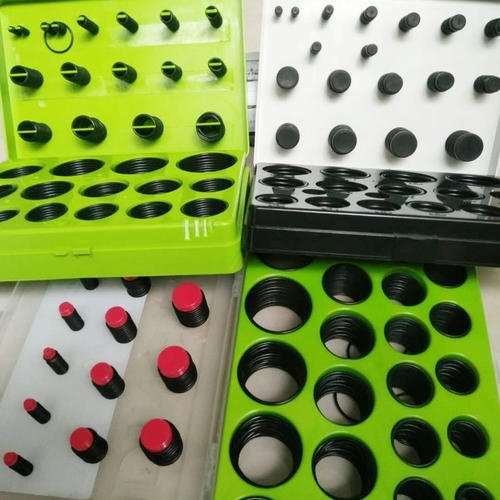Excavators have some parts that demand replacement because of their high usage rate. These parts are not metallic ones that can resist extremities long. Instead, these parts are made of non-metals with high flexibility and shock-absorbing nature. It is about the seals that are inside the excavator’s hydraulic cylinders. When selecting them for your excavators, you might find some essential elements like size, flexibility, resistance, etc. However, some additional factors will help you decide better. You will undoubtedly expect positive results because these steps will clear things up for you.
Decide Material and Type of Seal
Not all seals have the same material since different materials have different resisting powers. Some can bear pressure but not temperature, while some can bear both. You will have to choose the hydraulic seal material, which also depends on the type of seal. Different seals are installed inside the hydraulic cylinder of an excavator. You will find differences in their formation and other physical traits.
You will have to choose among these seals of a hydraulic cylinder. You will find wiper, piston, rod, and buffer seals. They are made of NBR, PU, FKM, and PTFE. There can also be some other types of materials, like soft metal. The structure of the seal and the material will be a main part of the selection. You will have to decide according to the below conditions.
Pressure Range of Cylinder
The pressure range is the first condition that directly affects a seal’s life. It would help if you chose accordingly since different pressure ranges depend on the cylinder’s size and condition. Usually, there are three pressure ranges, which will also create differences in the seals. You must ensure compatibility between the level-1 pressure and the level-1 seal. Choosing the wrong type of seal with the pressure range will either wear out the seal quickly or create other problems. The pressure range of the hydraulic system in an excavator will have to match the seal’s strength.
If you make a mistake in analyzing the seal type for the pressure endurance in a cylinder, the seal will either get suppressed or fractured. Since seals have some limits, any of these possibilities can occur. However, if you choose the right size and type of seal, the cylinder will work efficiently. That will meet the excavator’s minimum requirements to deal with consistent pressure for an adequate time.
Must Match the Heat and Speed of the Piston
The heat or extreme temperature is the biggest challenge for the seals. Since FKM, PU, and NBR are types of plastic and rubber, they have limitations against extreme temperatures. Since force inside a hydraulic cylinder creates friction, NBR, FKM, and PU will struggle to deal with it in extreme cases. However, these are the same materials that deal with pressure and mild heat inside a cylinder. So, it would help if you chose high-grade NBR, FKM, and PU to increase the survival of seals. Using PTFE seals will reduce flexibility while the heat and pressure resistance will be high. PTFE has a high resistance level against heat, which will make it a better choice for extreme conditions
This material has an edge over other types, like rubber and plastic, which will reduce the replacement frequency. The match between the seals and the pistons is mandatory. You need to ensure that the seals are well-tested and globally compliant. Procure them from manufacturers who comply with global standards. That will reduce the risk of early breakdown or damage to seals.
The piston speed will also affect the seals’ performance. Knowing the standard speed and your excavator’s speed will help you decide which grade to choose.
Pressure and Chemical Impact of Fluid
The fluid pressure will also affect the performance of the seals. You can not ignore this part. So, you will have to inspect the average pressure of the fluid inside the hydraulic cylinder. The bearing limit of the seal will withstand pressure only if it can meet the compatibility. Some rubber types are not suitable for some fluids. The chemicals inside those fluids can react with the rubber molecules. That will break down the surface so that the seals will wear soon. It would help if you remembered that since some substances have already damaged rubber and plastic.
However, PTFE seals can withstand harsh fluids in the cylinders. Their harsh nature will not be able to erode the PTFE’s surface very easily. However, you might struggle with the flexibility of seals. Rubber seals have more flexibility than the PTFE types. So, you will have to analyze according to the cylinder’s usage rate and fluid type.
Measure the Length of the Stroke and Diameters of the Rod and Bore
The stroke’s length will be measured before you select the seal. That will help you decide the right diameter and thickness of seals. Then, there will be no problem regarding the selection process. Also, the diameter of the rod and bore will be analyzed to select the right seals. That will be the size of the seals, which will have to meet the length and width of the cylinder’s internal components.
If you fail to analyze these sizes, there will be problems regarding leakage and pressure. The seals must meet the internal vacuum or pressure of the cylinder. Then, seals must be installed securely and tight inside the cylinder, eliminating every risk of leakage.
Conclusion
These were the secondary factors to analyze when selecting seals for hydraulic cylinders. Since you already know that the primary factors are seal size and flexibility, these elements were also essential.





